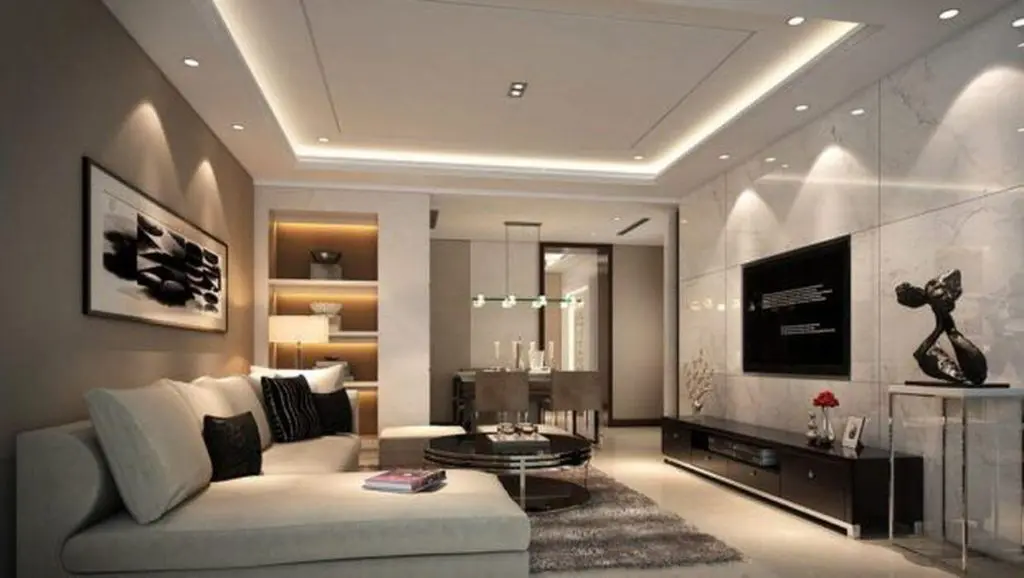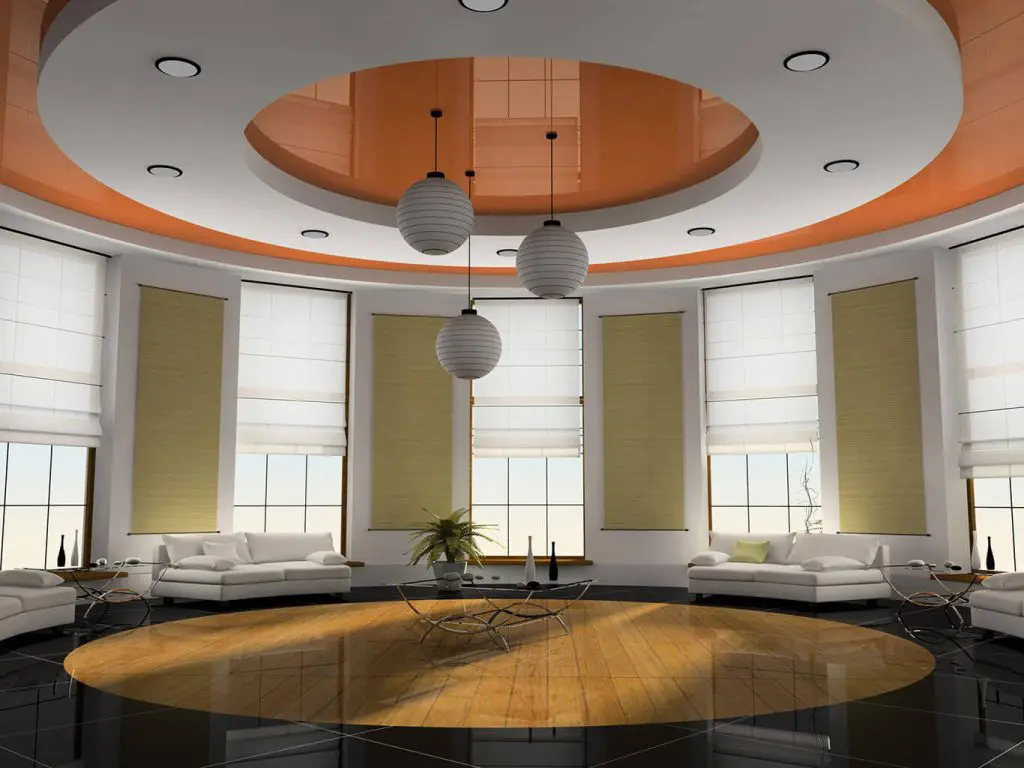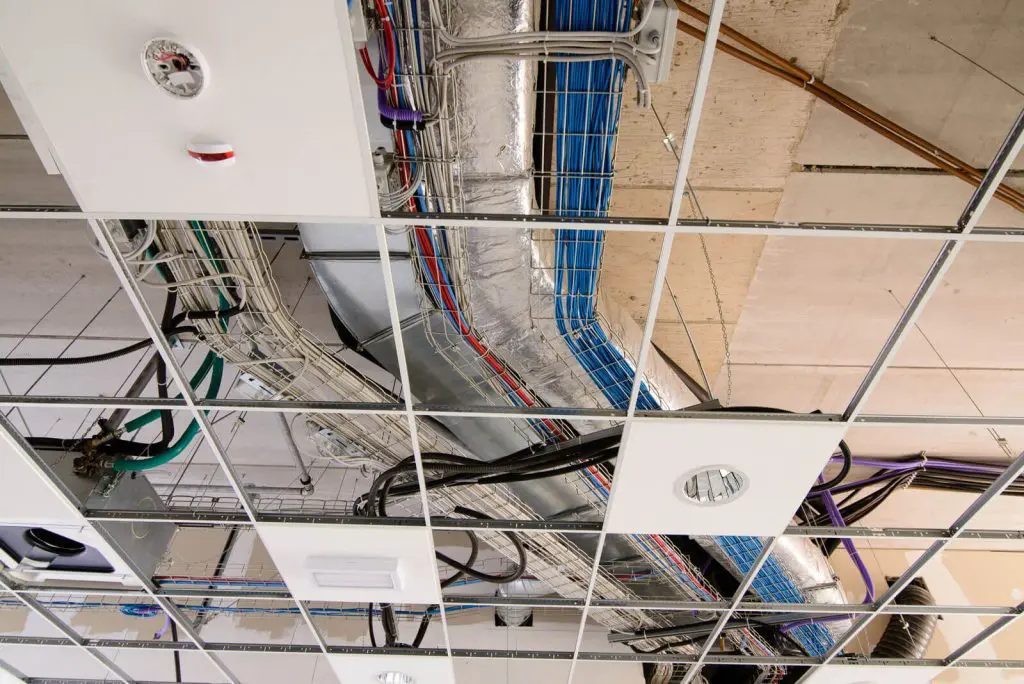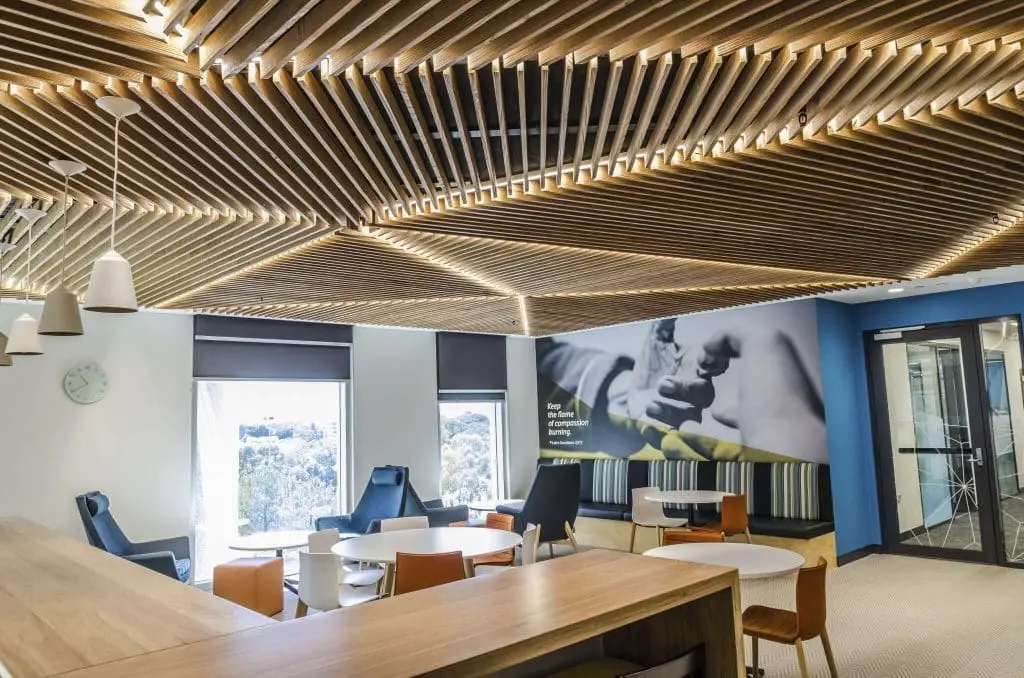A good home design seems incomplete without your ceiling. When you look upwards to a plain white ceiling in your house, it looks boring; no matter how well you’ve designed the rest of your house. People normally don’t take ceilings into consideration when decorating their homes. The main reason is because of the extra cost it adds to your budget.
Most people would rather have expensive furniture, tiles, or even lighting than have a well-designed ceiling. However, one must acknowledge the ceiling as the fifth wall in terms of room. It will be easier to understand why we should give more consideration to it. The aesthetic improvement isn’t the only benefit of a false or a suspended ceiling design.

Earlier, false ceilings were mostly made of gypsum boards, without having any decorative elements. However, these days it is very common for gypsum boards to have beautifying features along with their functions.
Moreover, nowadays, people are exploring more and more options for selecting materials for ceiling boards. Along with the common building materials, such as wood, fiber, cement, and so on, we also have the options of PVCs, POP, and so on.

What is a False Ceiling?
False ceiling is just a common name for suspended ceilings. It is a fitted ceiling that is made to hang below the original ceiling of a room. Another way to define them would be as secondary ceilings that are suspended from the structural floor slab. The false ceiling creates a void between the structural ceiling and the suspended ceiling. The void is normally 3 to 8 inches deep.

However, in some cases, such as in commercial buildings, they can be higher. The space between is used for many purposes such as distribution of heating, ventilation, air conditioning, plumbing and wiring services, and so on. In commercial buildings, they are also used for providing smoke detectors, motion detectors, sprinklers, and so on.
1. Hiding Exposed Beams
Exposed structural beams running along your roof slab can easily destroy the aesthetics of a room. The only way to hide them is by installing a false ceiling. It perfectly camouflages the beams and makes your room look more decent.
2. Less Electrical Wires
Most of the electrical wires run along your walls, giving a rough look to your house. Apart from being a good design element, a false ceiling also hides the wires. This is called concealed wiring and is used to wire the ceiling fixtures such as fans, lights, ACs, and so on.

3. Thermal Insulation
There are a few ceiling board materials available that work as great thermal insulators. These include gypsum, thermocol boards, PVS boards, aerolite boards, and so on. These materials do not allow the heat to enter inside your room through the rooftop, all the while keeping a low internal temperature.
4. Acoustic Proofing
By providing the bumps and dents in your false ceiling, you can provide acoustic proofing in your house. The sound waves bouncing into the room create some sound vibrations, which are absorbed by the uneven surface of the false ceiling. False ceilings contain an air cavity behind which provides good sound insulation from the above floors. The most commonly used acoustic ceiling boards are made of materials such as gypsum, mineral fiber, and metal.

5. Fire Protection
Materials such as metal, gypsum, mineral wool, PVC, and so on, offer much more fire resistance as compared to the normal ceilings. There are also a few specially designed ceiling boards that have fire-resistant properties.
Most of these boards have noncombustible cores and contain chemically combined water. These ceilings tackle high heat conditions and when they come in contact with fire, the ceilings sprays the water from inside it in the form of steam. However, even after the water is gone, the ceilings continue to resist fire.
The key to a great design is to look at the small and large things that need rumination. By overlooking something as important as a ceiling, not only are we overlooking the most basic criteria of a design, but we are also rendering half of the aesthetics of the design incomplete. A ceiling can be much more than a striking standout element. You can add interesting colors, make it neutral or even use traditional elements, according to your needs.
The functionality and beauty of a ceiling design can be like any stunning work of art.
– Tulisha Srivastava





